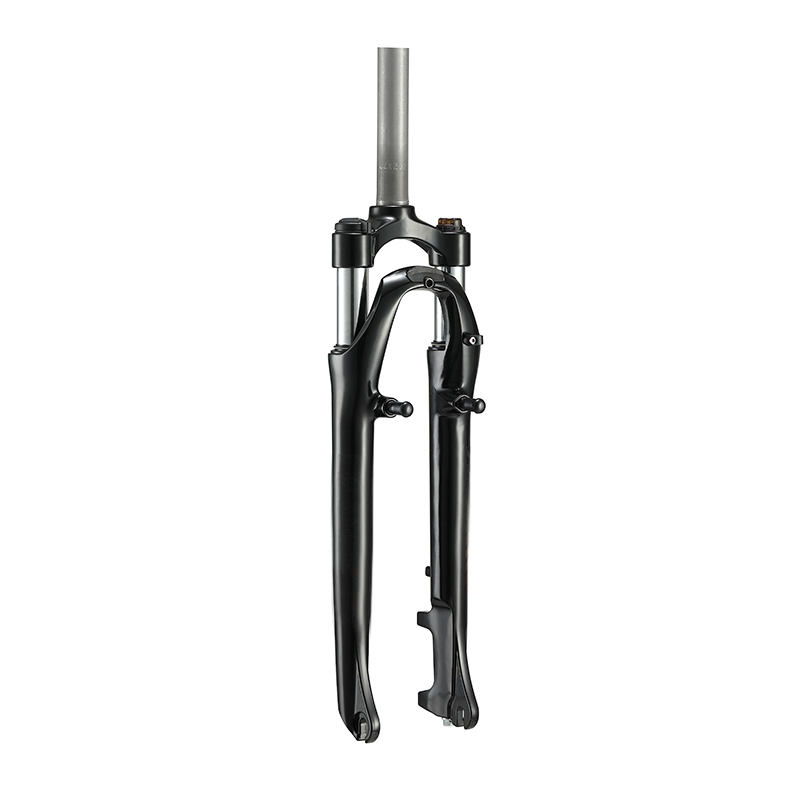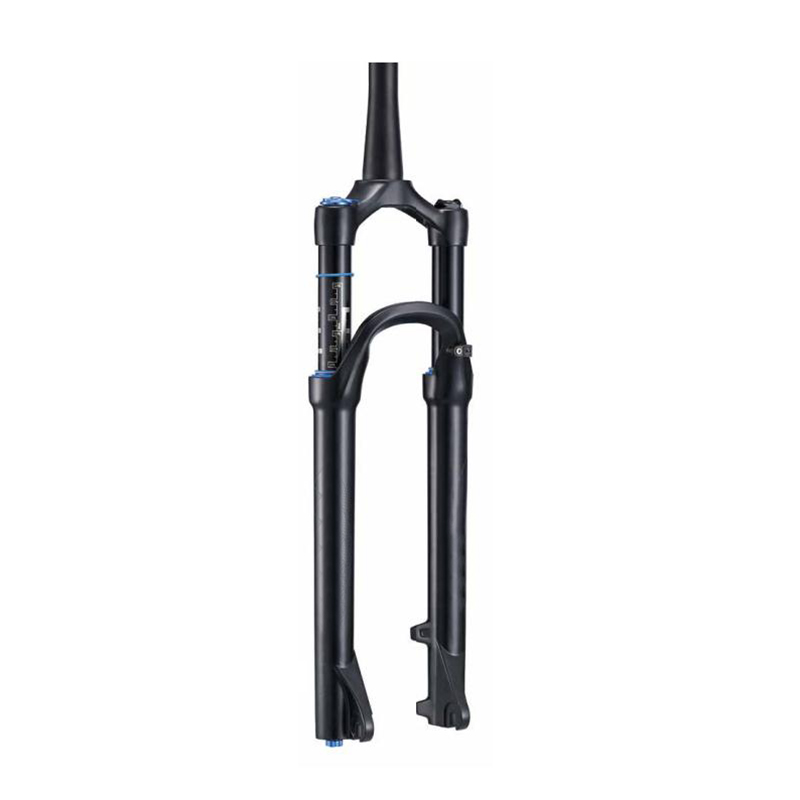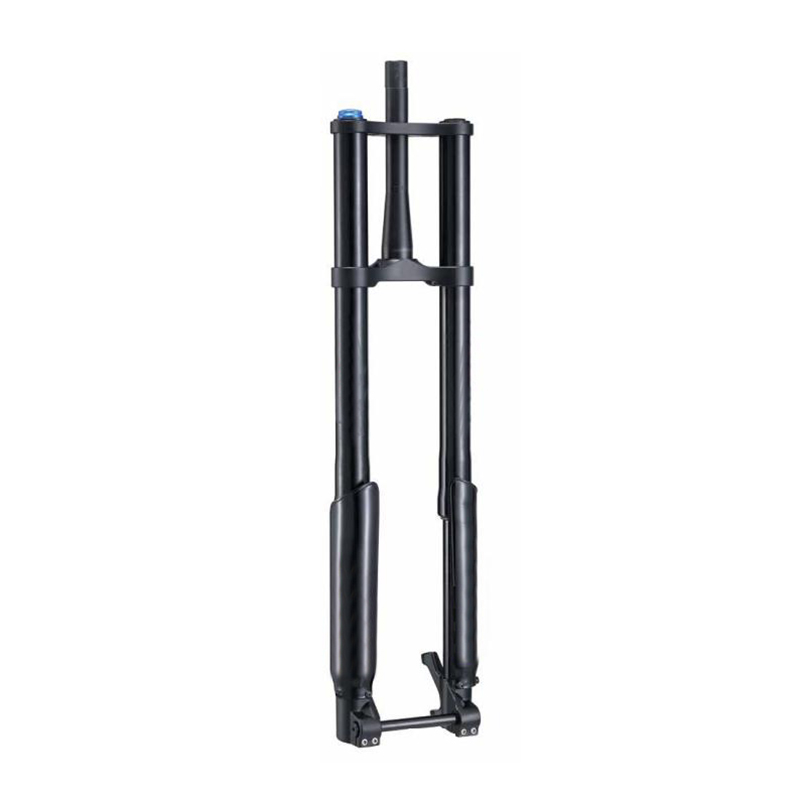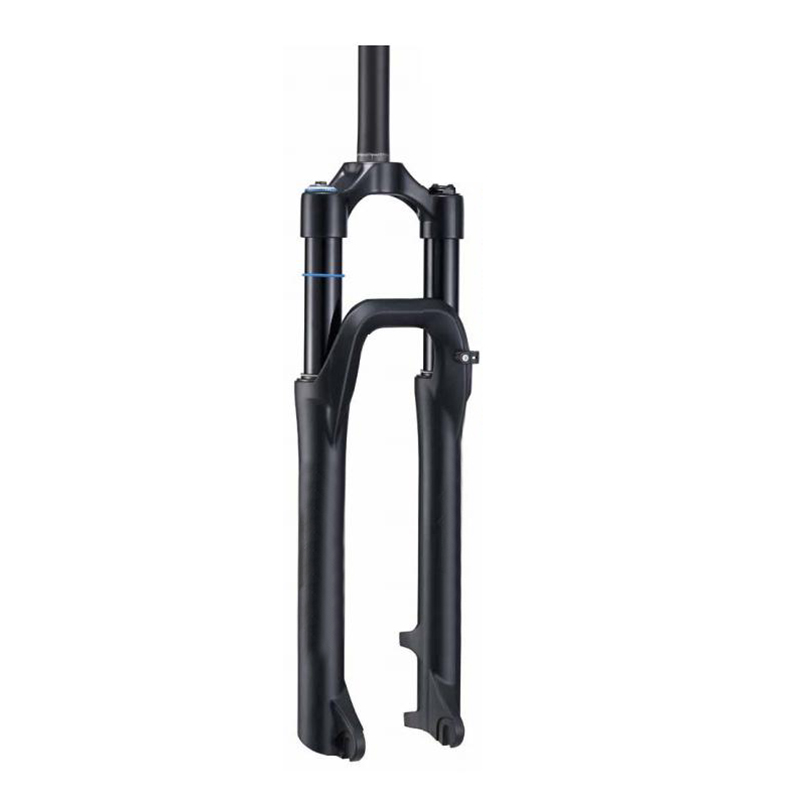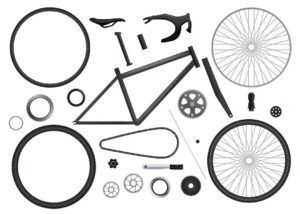يعد نظام تعليق مناسب لدراجتك أمرًا ضروريًا لتحسين الأداء وتعزيز تجربة الركوب الخاصة بك. في هذه المقارنة الشاملة للشوكة الهيدروليكية مقابل شوكة الهواء, نتعمق في تعقيداتهم لمساعدتك في اتخاذ قرار مستنير.
ما هو الشوكة الهيدروليكية?
الشوكة الهيدروليكية عبارة عن نظام تعليق يستخدم السائل الهيدروليكي لامتصاص الصدمات والاهتزازات التي تمت مواجهتها أثناء ركوب الدراجات. يتكون من مجموعة من الأنابيب التلسكوبية التي تحتوي على مكبس وسائل هيدروليكي, الذي يضعف حركة الشوكة استجابة للتأثيرات.
كيف يعمل الشوكة الهيدروليكية?
عندما يواجه الشوكة عثرة أو عقبة, يتم فرض السائل الهيدروليكي من خلال قنوات صغيرة أو صمامات داخل الشوكة, خلق مقاومة وتثبيط الحركة. يساعد هذا الإجراء التخميد على الحفاظ على الاستقرار والتحكم, ضمان ركوب أكثر سلاسة على التضاريس الوعرة.
إيجابيات وسلبيات استخدام الشوك الهيدروليكي
إيجابيات:
- تحسين قدرات التخميد: تقدم الشوك الهيدروليكي أداءً فائق التخميد, توفير ركوب أفخم ومراقبة على أنواع التضاريس المختلفة.
- أداء ثابت في ظروف مختلفة: تتأثر الشوكات الهيدروليكية بالتغيرات في ظروف درجة الحرارة وركوب الخيل, تقديم أداء موثوق بغض النظر عن العوامل الخارجية.
سلبيات:
- متطلبات الصيانة: تتطلب الشوك الهيدروليكي صيانة منتظمة, بما في ذلك استبدال أختام الزيت والسوائل, لضمان الأداء الأمثل وطول العمر.
- قابلية ضبط محدودة: مقارنة بشوكات الهواء, توفر الشوك الهيدروليكي قابلية ضبط محدودة, مما يجعل من الصعب ضبط إعدادات التعليق على التفضيلات الفردية.
من يفضل الشوك الهيدروليكي?
يتم تفضيل الشوك الهيدروليكي من قبل الدراجين الذين يعطون أولويات الفخمة, يتحكم, والموثوقية في نظام التعليق الخاص بهم. وهي تحظى بشعبية خاصة بين راكبي الهبوط, عشاق Enduro, وركاب درب يبحثون عن أداء ثابت في التضاريس الصعبة.
ما هو شوكة الهواء?
شوكة الهواء عبارة عن نظام تعليق يستخدم الهواء المضغوط لتوفير وسادة وامتصاص الصدمات أثناء ركوب الدراجات. يتكون من غرفة مليئة بالهواء, التي يمكن تعديلها لتغيير معدل ربيع الشوكة والأداء العام.
كيف يعمل Air Fork?
عندما يتم ضبط ضغط الهواء داخل الشوكة, حجم الهواء يشمع أو يتوسع, يؤثر على معدل ربيع الشوكة وتصلبه. عن طريق ضبط ضغط الهواء, يمكن للركاب تخصيص أداء الشوكة لتناسب أسلوب ركوبهم وتفضيلات التضاريس.
إيجابيات وسلبيات استخدام شوكات الهواء
إيجابيات:
- تصميم خفيف الوزن: عادة ما تكون شوكات الهواء أفتح من الشوك الهيدروليكي, تقليل وزن الدراجة بشكل عام وتحسين خفة الحركة وقابلية المناورة.
- ضغط هواء قابل للتعديل من أجل الأداء القابل للتخصيص: يمكن للدراجين ضبط معدل ربيع الشوكة واستجابةها عن طريق ضبط ضغط الهواء, السماح بإعدادات التعليق المخصصة.
سلبيات:
- قابلية التسريبات: شوكات الهواء عرضة لتطوير التسريبات في غرفة أو أختام الهواء, التي يمكن أن تسوية الأداء وتتطلب الصيانة.
- إمكانية الخروج من القاع: في ظروف الركوب القصوى أو مع ضغط الهواء غير كافٍ, قد أسفل شوكات الهواء من الخارج, مما يؤدي إلى تأثيرات قاسية وتقليل فعالية التعليق.
من يفضل شوكات الهواء?
يفضل شوكات الهواء من قبل الدراجين الذين يعطون الأولوية لشروك تعليق الميزانية, بناء خفيف الوزن, توليه, والاستجابة في نظام التعليق الخاص بهم. يتم استخدامها بشكل شائع في سباق البلاد, ركوب ماراثون, وغيرها من التخصصات التي تكون فيها وفورات الوزن والأداء الدقيق أمرًا بالغ الأهمية.
ما هو الفرق بين التعليق الهيدروليكي والهواء?
بالإضافة إلى خصائص التصميم والتشغيل, من الضروري فهم خلافاتهم في الأداء وطرق الحفاظ عليها. لمعرفة المزيد, قد تعرف بشكل أفضل ما يناسب شوكة دراجتك.
مقارنة الأداء
| أداء | الشوكات الهيدروليكية | شوكات الهواء |
| التأثير على جودة الركوب | تميل إلى طلب صيانة أقل وأقل عرضة للتسربات | قد تقدم التخصيص ولكن قد يتطلب المزيد من التعديلات |
| معالجة الخصائص | أداء ثابت في ظروف مختلفة | التعامل مع الاستجابة, قد تتطلب تعديلات متكررة أكثر |
| المتانة وطول العمر | قد يتطلب المناولة المتجاورة تعديلات متكررة أكثر | عرضة للتسريبات وقد تتطلب المزيد من الصيانة |
طرق مختلفة للصيانة والصيانة
- يتضمن جدول الصيانة الموصى به للشوكات الهيدروليكية استبدال أختام الزيت والسوائل بشكل دوري ونزف النظام لإزالة فقاعات الهواء.
- يتضمن جدول الصيانة الموصى به لشوكات الهواء فحص ضغط الهواء بانتظام وخدمة أختام الهواء لمنع التسريبات والحفاظ على الأداء الأمثل.
المصدر من الشركة المصنعة للدراجة الموثوقة
في المواجهة النهائية بين شوكة هيدروليكية مقابل الهواء, يقدم كلا أنظمة التعليق مزايا واعتبارات فريدة. سواء كنت تعطي الأولوية للفخمة, يتحكم, أو النفق, يمكن أن يؤثر اختيار الشوكة المناسبة بشكل كبير على تجربة الركوب الخاصة بك.
لكن تذكر, من الضروري اختيار شركة تصنيع شوكة الدراجات ذات السمعة الطيبة مثل تألق قريبا المعروف عن الجودة, مصداقية, ودعم العملاء عند اختيار شوكة التعليق لدراجتك. من خلال الحصول على شوكة من علامة تجارية موثوق بها, يمكنك ضمان تجربة ملكية مرضية والاستمتاع براحة البال مع العلم أن نظام التعليق الخاص بك مبني على ذلك.

